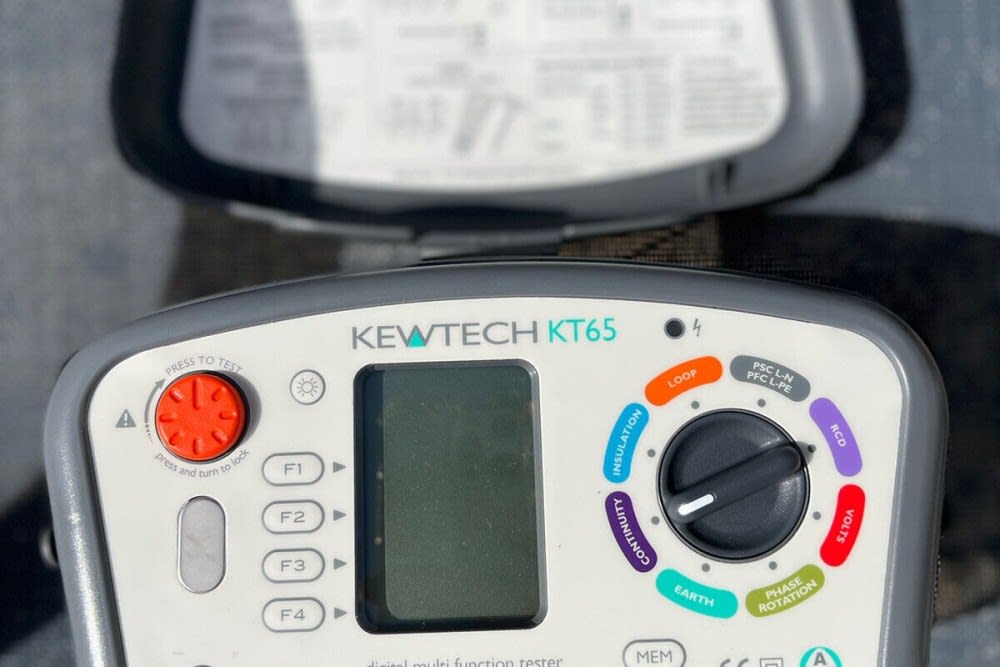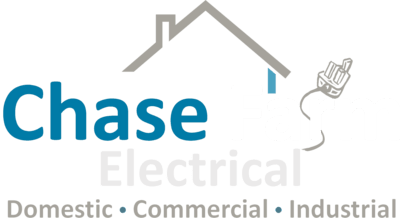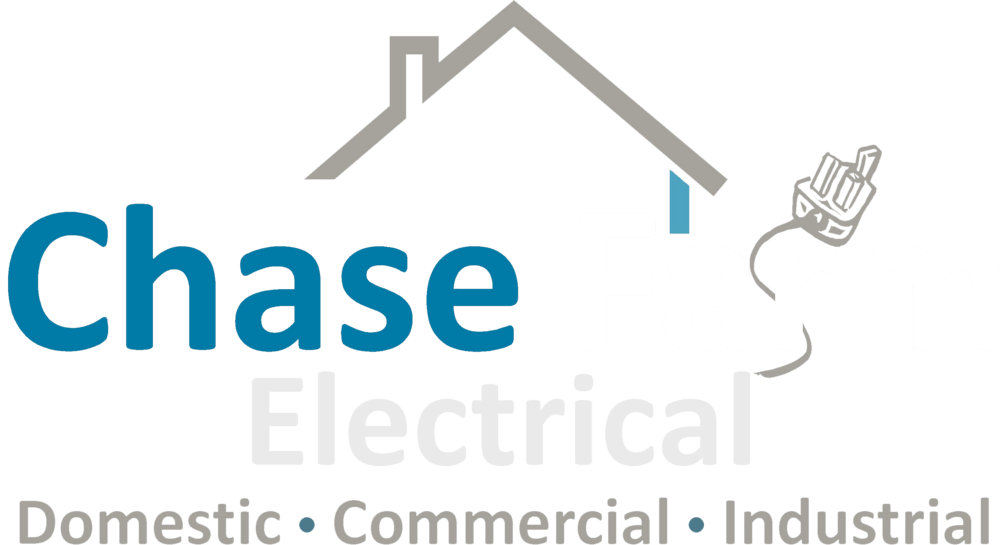
posted 7th May 2025

How Much Should You Expect to Pay for an Electrical Installation Condition Report? A Comprehensive Pricing Guide
When it comes to ensuring the safety and reliability of your electrical systems, an Electrical Installation Condition Report (EICR) is essential. However, many homeowners and property managers often find themselves wondering: how much should you expect to pay for an EICR? Understanding the costs involved in obtaining this vital report can be puzzling, with prices varying widely based on various factors. In this comprehensive pricing guide, we’ll break down what influences EICR costs, from the size and complexity of the property to the qualifications of the electrician. You'll gain insights into what’s included in the report and why investing in an EICR is crucial for your home or business's electrical safety. Armed with this knowledge, you'll feel empowered to make informed decisions and choose the right service at a fair price, ensuring not just compliance with regulations but peace of mind for your electrical systems. Let’s dive in and unravel the pricing landscape of Electrical Installation Condition Reports.
Understanding Electrical Installation Condition Reports
Electrical Installation Condition Reports (EICRs) are specialized documents that provide a detailed assessment of the electrical systems within a property. These reports are essential for identifying any potential issues that could pose safety hazards, ensuring compliance with electrical safety regulations, and maintaining the overall integrity of electrical installations. An EICR is typically conducted by a qualified electrician who inspects the wiring, circuits, and other components of the electrical system to determine their condition and functionality.
The purpose of an EICR is to evaluate the safety of an electrical installation and to highlight any defects or areas that require urgent attention. During an EICR, the electrician will carry out a series of tests and visual inspections to check for signs of wear and tear, deterioration, and any deviations from current electrical standards. The findings are then documented in the report, which includes recommendations for remedial actions, if necessary. This ensures that the property owner is aware of any issues that need to be addressed to maintain a safe and compliant electrical system.
For homeowners and property managers, obtaining an EICR is a proactive measure that can prevent potential electrical hazards and costly repairs in the future. It provides peace of mind by ensuring that the electrical installations are in good working order and meet the required safety standards. Moreover, an EICR can also be an important document when buying or selling a property, as it provides valuable information about the condition of the electrical system to prospective buyers or tenants.
Importance of Electrical Installation Condition Reports
The importance of Electrical Installation Condition Reports cannot be overstated, as they play a crucial role in safeguarding the safety of occupants and the integrity of properties. Electrical faults can lead to serious consequences, including fires, electric shocks, and damage to appliances. By identifying potential issues early on, an EICR helps to mitigate these risks and ensures that the electrical system operates safely and efficiently.
Regular EICRs are also a legal requirement for certain types of properties, such as rental accommodations and commercial buildings. Landlords, for instance, are required to ensure that their properties meet electrical safety standards and must provide an EICR to demonstrate compliance. Failure to do so can result in hefty fines and legal liabilities. For commercial properties, an EICR is often necessary to meet health and safety regulations and to protect the business from potential disruptions caused by electrical faults.
Beyond legal compliance, an EICR offers valuable insights into the overall condition of the electrical system. It can highlight areas that may need upgrading or improvement to enhance energy efficiency and reduce operational costs. For example, older wiring and outdated components may not only pose safety risks but also contribute to higher energy consumption. Addressing these issues can lead to significant cost savings in the long run.
Factors Influencing the Cost of an Electrical Installation Condition Report
Several factors can influence the cost of an Electrical Installation Condition Report, making it important to understand what drives the pricing. One of the primary factors is the size and complexity of the property. Larger properties with more extensive electrical systems will require a more thorough inspection, which can increase the time and effort needed to complete the EICR. Similarly, properties with complex electrical installations, such as multiple circuits or specialized equipment, may also incur higher costs due to the additional work involved.
The qualifications and experience of the electrician conducting the EICR can also impact the cost. Highly qualified and experienced electricians may charge higher rates for their services, but they bring a wealth of expertise and reliability to the inspection process. It is important to choose a certified and reputable electrician to ensure that the EICR is conducted to a high standard and that the findings are accurate and trustworthy.
The location of the property can also play a role in determining the cost of an EICR. In areas with a higher cost of living or greater demand for electrical services, prices may be higher compared to regions with lower living costs or less demand. Additionally, the urgency of the inspection can affect the price, with expedited services typically costing more than standard scheduling.
Average Pricing for Electrical Installation Condition Reports
The average pricing for Electrical Installation Condition Reports can vary widely based on the factors mentioned earlier. Generally, for a standard residential property, the cost of an EICR can range from £100 to £300. For larger or more complex properties, such as multi-story buildings or commercial establishments, the price can be significantly higher, ranging from £300 to £1000 or more.
It is important to note that these figures are averages, and actual costs can vary depending on the specific circumstances of the property and the electrician conducting the inspection. Some electricians may offer fixed pricing based on the size and type of property, while others may charge an hourly rate for their services. It is advisable to obtain multiple quotes from different electricians to get a sense of the pricing range and to ensure that you are getting a fair and competitive rate.
When comparing quotes, it is essential to consider what is included in the price. Some electricians may offer a comprehensive package that includes the inspection, testing, and the issuance of the report, while others may charge additional fees for certain services. Understanding the scope of work and any potential extra costs can help you make an informed decision and avoid unexpected expenses.
Regional Variations in Pricing
Regional variations in pricing for Electrical Installation Condition Reports are influenced by several factors, including the cost of living, demand for electrical services, and local regulations. In metropolitan areas with higher living costs, such as London, the prices for EICRs tend to be higher compared to rural or less densely populated regions. This is due to the increased overhead costs for electricians operating in these areas, such as transportation, accommodation, and business expenses.
Moreover, the demand for electrical services can also impact the pricing. In regions with a higher concentration of rental properties or commercial buildings, there may be greater demand for EICRs, which can drive up prices. Conversely, in areas with fewer rental properties or less commercial activity, the demand may be lower, resulting in more competitive pricing.
Local regulations and building codes can also influence the cost of an EICR. In some regions, stricter safety standards and inspection requirements may necessitate more thorough and extensive inspections, leading to higher costs. Additionally, regional variations in the availability of qualified electricians can affect pricing, with areas experiencing a shortage of skilled professionals potentially seeing higher rates.
Additional Costs to Consider
When budgeting for an Electrical Installation Condition Report, it is important to consider any additional costs that may arise. One common additional expense is the cost of remedial work that may be required to address any issues identified in the EICR. Depending on the extent of the repairs needed, this can range from minor fixes, such as replacing faulty switches or sockets, to more significant work, such as rewiring or upgrading the electrical system.
Another potential additional cost is the fee for re-inspection if remedial work is carried out. Some electricians may charge a separate fee to re-inspect the property and issue an updated EICR, while others may include this in the original quote. It is important to clarify this with the electrician beforehand to avoid any surprises.
Additionally, there may be costs associated with obtaining the EICR documentation, such as administrative fees or charges for providing extra copies of the report. While these costs are generally minimal, they can add up, especially for larger properties or commercial establishments where multiple copies of the report may be needed.
How to Choose a Qualified Professional for Your Report
Choosing a qualified professional to conduct your Electrical Installation Condition Report is crucial to ensure the accuracy and reliability of the inspection. Here are some key factors to consider when selecting an electrician for your EICR:
Firstly, verify the electrician's qualifications and certifications. A qualified electrician should be registered with a recognized professional body, such as the National Inspection Council for Electrical Installation Contracting (NICEIC) or the Electrical Contractors' Association (ECA). Membership in these organizations indicates that the electrician has met the necessary standards of competence and professionalism.
Experience is another important factor to consider. An electrician with extensive experience in conducting EICRs will be well-versed in the inspection process and familiar with common issues that may arise. Ask for references or check online reviews to gauge the electrician's reputation and track record.
It is also advisable to obtain multiple quotes and compare the services offered by different electricians. This will give you a better understanding of the pricing range and the scope of work included in the quote. Be wary of extremely low quotes, as they may indicate substandard work or hidden fees. Instead, look for a balance between competitive pricing and quality service.
Tips for Reducing the Cost of Your Electrical Installation Condition Report
While the cost of an Electrical Installation Condition Report is an important investment in your property's safety, there are several ways to reduce the overall expense. Here are some tips to help you save money on your EICR:
One effective way to reduce costs is to bundle the EICR with other electrical services. Many electricians offer discounts for multiple services, such as combining an EICR with routine maintenance or other inspections. This can help you save on the overall cost while ensuring that your electrical system is thoroughly checked.
Another tip is to schedule the EICR during off-peak times. Electricians may offer lower rates during periods of lower demand, such as weekdays or outside of peak seasons. By avoiding busy periods, you may be able to secure a more competitive rate for the inspection.
Additionally, consider performing basic maintenance tasks before the electrician arrives. Simple actions, such as clearing access to electrical panels and ensuring that all circuits are labelled, can help the inspection process run more smoothly and efficiently. This can reduce the time needed for the inspection and potentially lower the cost.
Common Questions About Electrical Installation Condition Reports
Many property owners have questions about Electrical Installation Condition Reports, and understanding the answers can help demystify the process. Here are some common questions and their answers:
How often should an EICR be conducted? The frequency of EICRs depends on the type of property and its usage. For residential properties, it is generally recommended to have an EICR conducted every 10 years or when there is a change in occupancy. For rental properties, an EICR should be carried out every 5 years or at the start of a new tenancy. Commercial properties may require more frequent inspections, depending on the nature of the business and the electrical loads involved.
What happens if the EICR identifies issues? If the EICR identifies any issues, the report will categorize them based on their severity. Code C1 issues are immediate dangers that require urgent attention, while Code C2 issues are potentially dangerous and should be addressed promptly. Code C3 issues are recommendations for improvement but are not considered dangerous. The property owner is responsible for arranging the necessary remedial work to address any identified issues.
Can I conduct an EICR myself? Conducting an EICR requires specialized knowledge and equipment, and it is not advisable to attempt it yourself. Only a qualified and certified electrician should conduct an EICR to ensure that the inspection is thorough and accurate. Attempting to conduct an EICR without the proper qualifications can result in incomplete or inaccurate findings and may not be legally recognized.
Conclusion and Final Thoughts on Pricing
In conclusion, understanding the cost of an Electrical Installation Condition Report involves considering various factors, including the size and complexity of the property, the qualifications of the electrician, and regional variations in pricing. While the average cost for a residential EICR ranges from £100 to £300, larger or more complex properties can incur higher costs. It is important to obtain multiple quotes and choose a qualified professional to ensure the accuracy and reliability of the report.
Investing in an EICR is crucial for maintaining the safety and integrity of your electrical system. It helps to identify potential issues before they become serious hazards and ensures compliance with electrical safety regulations. While there may be additional costs for remedial work or re-inspections, the peace of mind and safety provided by an EICR are well worth the investment.
By following the tips for reducing costs and understanding the key factors that influence pricing, you can make informed decisions and choose the right service at a fair price. Whether you are a homeowner, landlord, or property manager, obtaining an EICR is an essential step in ensuring the safety and reliability of your electrical systems.
Investing in an Electrical Installation Condition Report (EICR) is crucial for maintaining safety, reliability, and compliance. Understanding costs, choosing qualified professionals, and budgeting for potential extras ensures peace of mind.
Chase Farm Electrical – Powering Your Future, Securing Your Safety.





